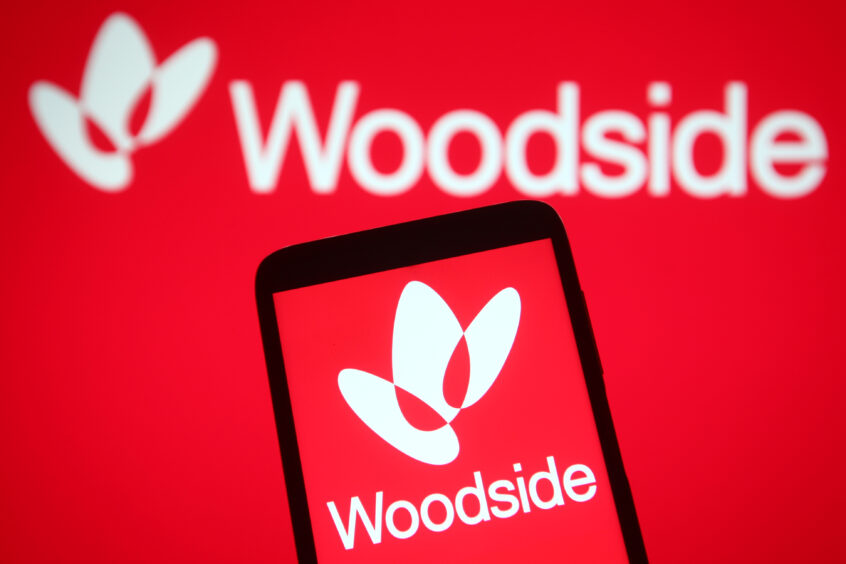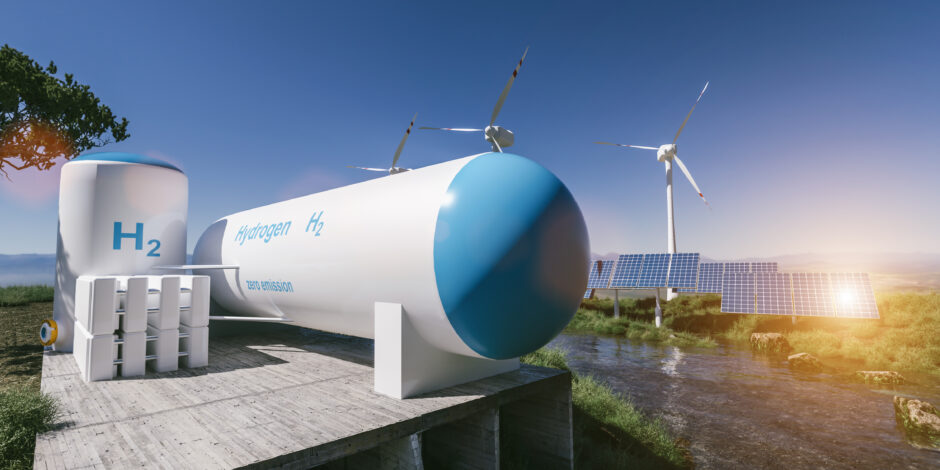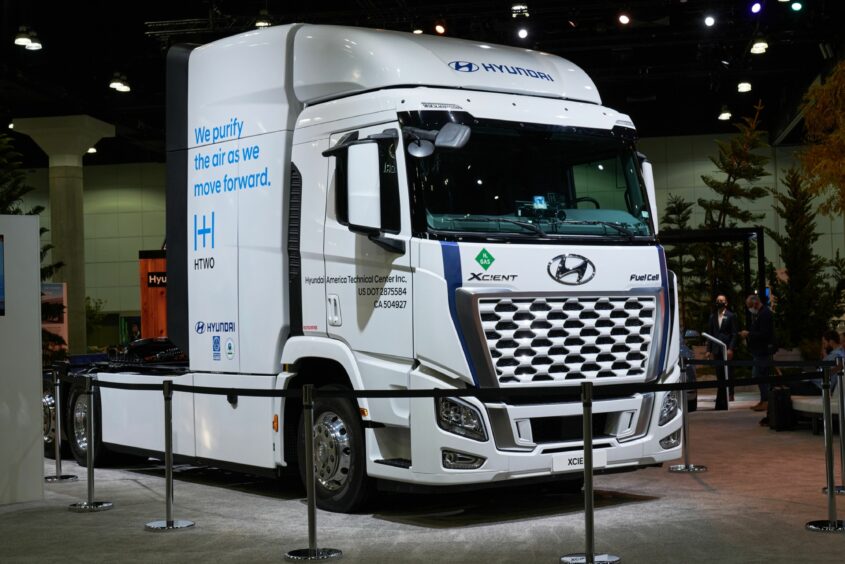
Australian liquefied natural gas (LNG) developer Woodside (ASX:WPL) is busy positioning itself for a future in which hydrogen may play a growing role in the energy mix. Significantly, it is working closely with customers in its traditional LNG export markets – particularly Japan and South Korea – to meet demand for cleaner forms of energy.
Indeed, Woodside’s most advanced plans for the emerging hydrogen market see it supplying ammonia, produced from 100% renewable energy, and increasingly marketed as ‘green ammonia’ to Japan by 2026. Ammonia, which is made from hydrogen, is currently the most established way of safely transporting hydrogen over long distances.
Japan’s trading houses are aggressively divesting from fossil fuels amid an uncertain future for the energy sources and pressure from shareholders. These giant trading companies have traditionally been among the biggest investors in oil and natural gas assets to bring the fuels home to resource-short Japan. Indeed, Woodside has a long history of working with these Japanese players that are now seriously turning their attention to hydrogen and ammonia, both of which potentially offer a much lower carbon footprint compared with fossil fuels.
Woodside is working with one of these Japanese trading houses – Marubeni – to develop a supply chain for ammonia, made in Australia from 100% renewable energy, and exported to Japan, Jason Crusan, vice president technology at Woodside, told Energy Voice in an interview.
Crusan, who joined Woodside in March 2019 from the National Aeronautics and Space Administration (NASA) in the US, said the company is strongly focused on meeting its customers’ demands.
Niche Markets
Woodside and Marubeni have identified niche markets in Japan that are willing to pay a premium for ammonia produced from 100% renewable energy.
A subset of Marubeni’s customers in Japan are seeking to “green up their product and they are willing to pay a price premium,” said Crusan. This premium market could be in the power, industrial, agriculture or pharmaceutical sectors.
Woodside, Marubeni, and Japanese engineering company IHI, have concluded that it is technically and commercially feasible to export ammonia to Japan from the Bell Bay area in the Australian state of Tasmania, where Woodside has secured a site for a hydrogen and ammonia manufacturing hub.
The hub, dubbed H2TAS, will be a phased development with the potential to support up to 1.7 GW of electrolysis for hydrogen and ammonia production. Electrolysis is a promising option for carbon-free hydrogen production from renewable and nuclear resources. It is the process of using electricity to split water into hydrogen and oxygen.
Significantly, the site in Tasmania will use a combination of hydropower and wind power to create ammonia from 100% renewable energy for export, as well as hydrogen for domestic use. Woodside is targeting a final investment decision in 2023, with construction and commissioning expected to take about 24 months.
The initial phase will have capacity of up to 300 MW and target production of 0.2 million tonnes per year (t/y) of ammonia, matched to forecast customer demand.
It is a very large ammonia project by today’s standards, said Crusan. As a rule of thumb hydrogen produces nearly three times more energy per kilogram compared to LNG.
Developing hydrogen export facilities powered by 100% renewable energy in partnership with customers ensures there is a long-term market to underpin the investment.
Woodside believes that building partnerships across the value chain so that producers, users, and infrastructure providers collaborate and understand each other’s needs will help de-risk investments and does not rely on government fiscal support. This explains why Woodside is participating in the Hynet and HyStation consortia in South Korea to develop light vehicle and public bus fleet hydrogen refuelling infrastructure.
Big Market Opportunities In Asia
“Japan and South Korea are some of the biggest markets for us, but we are also seeing hydrogen and ammonia interest across all of Asia, whether it is Singapore or even Taiwan, and other Asian countries looking at decarbonisation goals. By far Japan and South Korea are the driving market. But many others are also starting to participate,” Crusan told Energy Voice.
“Hydrogen is fundamentally a fuel that will go into existing markets or existing use cases, for power generation, transport, and we see it happening first in transport and then in power generation,” said Crusan.
The key to unlocking Asian markets will be figuring out how to export hydrogen. In the near-term Woodside sees converting hydrogen to ammonia as the answer, but in the longer run the company is aiming to transport hydrogen and liquid hydrogen to its Asian customers.
Advantaged Hubs
Woodside is now seeking suitable locations for what it calls “advantaged hubs” to produce hydrogen and ammonia. These are unique sites in Australia or globally that provide the necessary fundamentals to enable large-scale hydrogen production at competitive cost. In Australia, Woodside has acquired the rights to two sites. Aside from H2TAS in Tasmania, Woodside also has a site near Perth in Western Australia, dubbed H2PERTH.
At its full potential, H2PERTH would be one of the largest facilities of its kind in the world, producing up to 1,500 tonnes per day of hydrogen that would be converted into ammonia and liquid hydrogen for export to customers in Asia and around the world.
However, unlike H2TAS, the Perth hub will initially start manufacturing hydrogen and ammonia using electricity generated by fossil fuels, as well as renewable energy. Woodside said this will create a lower-cost product. As the facility is scaled up more renewable energy will be used in the manufacturing process, thereby reducing the product’s carbon footprint.
Initially, under a first phase of development, H2PERTH is planned to produce 300 tonnes per day of hydrogen, with two-thirds of that made using natural gas and one-third using renewable energy. As production is scaled up to 1,500 tonnes per day, all the growth will come from renewable energy. Construction is planned to start in 2024 at the proposed $750 million plant.
Elsewhere, Woodside is also targeting hydrogen market opportunities in the US and has announced plans to expand its portfolio of hydrogen production opportunities in North America.
Woodside is clearly positioning itself for a future where hydrogen could well play a greater role in the energy mix. In export markets like Japan, South Korea, and China, demand for both LNG and new energy sources, such as hydrogen and ammonia is expanding as governments establish national emissions reduction targets more closely aligned with the global UN climate commitments.

 © Shutterstock / Audio und werbung
© Shutterstock / Audio und werbung © Bloomberg
© Bloomberg